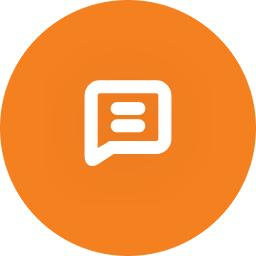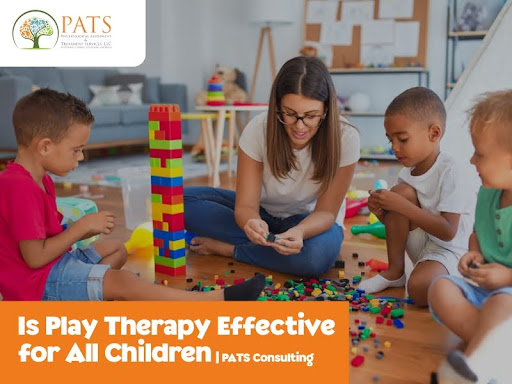Parents and school counselors seek more than medication alone for ADHD. You want support that builds skills and confidence in daily life. You also ask a direct question. Is play therapy effective for all children?
ADHD affects many families in the United States today. Recent federal data show that about eleven percent of children have an ADHD diagnosis.
Core symptoms include inattention, hyperactivity, and impulsivity. Each child presents a different profile of needs and strengths.
Play therapy offers a noninvasive child friendly approach within a safe setting. A trained therapist uses toys, art games, and stories to support expression and growth. This method builds on the natural language of play for children.
Our focus is practical and balanced. We will assess how play therapy is effective for all children and where limits apply.
What is Play Therapy?
Play therapy is a psychotherapy designed for children. It uses toys, games, art, and role play to explore feelings.
Therapists help children solve problems through guided play. Sessions happen in a safe, supportive setting with a trained therapist.
Child Centered and Directive Approaches
Child centered play therapy lets the child lead the session. The therapist follows the child’s play cues and supports expression.
Directive play therapy adds structure and targeted activities. The therapist introduces games or stories to build specific skills. Many clinicians blend both methods based on the child’s needs.
What A Typical Session Looks Like
A session feels safe and welcoming for children. Play is the natural language for young minds. Children may draw or paint during therapy.
They may build with blocks or use puppets. They may work in a sand tray with figures. The therapist watches play themes and supports healthy skills.
How Can Play Therapy Help ADHD Symptoms
Parents and counselors want clear answers. Play therapy can support many ADHD challenges. Evidence and clinical guidance point to real gains.
Improving Focus and Impulse Control
- Structured games build attention through rules and turns.
- Board games and memory games reward waiting and planning.
- Therapists coach think before acting during guided play.
- Some clinics report more on task behavior with play based work.
Emotional Regulation and Coping
- Many children feel frustration and quick anger with ADHD.
- Play therapy offers safe outlets like clay or a soft bag.
- Children practice naming feelings during stories and art.
- Better labeling can calm emotional outbursts over time.
Social Skills and Problem Solving
- Cooperative play teaches sharing and turn taking.
- Role play builds communication and perspective taking.
- Guided puzzles and building games grow planning and patience.
- Many programs report better peer relationships after sessions.
Self Esteem and Confidence
- Success in play boosts a child’s sense of competence.
- Wins in creative tasks can rebuild belief after school setbacks.
- Positive feedback during play encourages future focus and effort.
Stress Reduction and Calming
- Therapists use deep breathing with bubbles and gentle music.
- Sandbox play and sensory tasks teach self soothing skills.
- Lower anxiety can reduce symptom spillover during the day.
Is Play Therapy Right For Every Child With ADHD
ADHD presents many patterns. Symptoms and needs vary by child. Co occurring anxiety or autism can shape results. Age and severity also matter.
Age Fit and Developmental Stage
Play therapy suits most children ages three to twelve. Child centered play therapy often targets ages three to ten.
Teens may need adapted methods with more talk and coaching. Toddlers benefit most from parent led behavior supports first.
Therapist Skill and Family Engagement
Outcomes depend on the child’s needs and goals. They also depend on the therapist’s training and method.
Parent and caregiver involvement strengthens progress. School teams can reinforce goals in the classroom.
Know the Limits With Care
Play therapy will not cure ADHD. It rarely removes core inattention or hyperactivity on its own. It builds coping skills and daily habits.
Severe symptoms may need added support. Use classroom plans and parent training when needed. Consider medication for older children when appropriate.
Key Play Therapy Techniques For ADHD
Play therapy for kids uses methods that target real needs. Each approach supports focus, emotions, and social skills. Results vary by child and setting. Trained play therapists select methods that fit age, strengths, and goals.
Child Centered Play
In child centered play therapy, the therapist follows the child’s lead. Themes emerge through free play with art, puppets, and play therapy toys.
This gentle approach reveals hidden feelings and unmet needs. Children gain a sense of control and feel safe. That confidence encourages healthy expression and steady progress.
Directive Play Therapy
Directive play therapy adds structure and clear goals. The therapist introduces games that build turn taking and patience. Simon Says and simple rule games strengthen listening and inhibition.
Short tasks increase planning and attention span. Many therapists blend directive and child led work to match each therapy session.
Storytelling and Puppet Play
Stories and puppets mirror everyday challenges in simple scenes. Children project worries at a safe distance and try new choices. The therapist pauses the story to label feelings and thoughts.
Children practice words for emotions and problem solving skills. Repeated role practice grows confidence and social skills over time.
Art and Craft Activities
Art channels strong feelings into safe action. Drawing and painting ask for focus on one clear goal. That steady focus can quiet a restless or worried mind.
The therapist names the feelings shown in the artwork. Children learn simple coping strategies they can use at home and school. Confidence grows with each finished piece.
Physical and Movement Play
Movement channels high energy in safe ways. Stop and go games teach listening and self control. Obstacle paths build coordination and task persistence.
Short relaxation follows active play to lock in calm. Children notice how their body feels when settled. They begin to use these cues during the day.
Practical Tips For Parents and Educators
Ask the therapist about training and licenses. Verify certification with the Association for Play Therapy. Request details on experience with ADHD.
Ask how the therapist measures progress. Ask how you can support goals at home and school.
Invite family members to join selected sessions. Use brief parent and child play time to learn cues.
Practice shared games that reinforce skills. Keep play simple and repeatable. Praise effort and small steps.
Set realistic goals from the start. Expect a gradual change over the months. Track one or two clear targets.
Celebrate small wins like one extra minute of focus. Note fewer outbursts or faster cool downs.
Keep a steady rhythm of care. Attend weekly sessions when possible. Complete practice tasks between visits.
Use short daily routines for skills. Repeat the same steps so habits form. Consistency builds confidence.
Coordinate closely with school teams. Share therapy goals with counselors and teachers. Ask for rewards that match home plans.
Align class rules with session skills like turn taking. Review progress during regular check ins.
These steps support play therapy for kids in real settings. They also strengthen play therapy for children when results feel slow. The benefits of play therapy improve with teamwork and patience.
This approach also clarifies that play therapy is effective for all children. The best results appear when plans fit the child and the adults follow through.
FAQs
Is play therapy just for kids?
Yes. Adults may use art or play based methods. For ADHD, the focus is on children.
How long before we see results?
Timelines vary by child. Some progress appears within months. Steady practice improves results.
Does play therapy replace medication?
No. Many children use play therapy with medication or behavior programs. Your clinician will guide choices.
At what age is best?
Play therapy fits most children ages four to twelve. Teens may need adapted methods. Toddlers need parent coaching.
How do we choose a play therapist?
Ask about licenses and certification. Confirm experience with ADHD. Request a clear plan for goals and tracking.
What happens in a session?
Children use toys, art, stories, and games. The therapist guides expression and teaches coping and social skills.
How involved should parents and caregivers be?
Very involved. Practice skills at home. Join selected sessions. Share updates with the therapist and school team.
Start Your Child Centered Plan With Pats Consultants
Play therapy offers many gains for ADHD. Children often show better attention and self control. They learn emotional coping and stronger social skills.
We assess needs and strengths with care. We design a plan that fits your child. Your therapist explains goals and measures progress.
Choose a setting where your child feels safe. Interest in play supports engagement and learning. Parents and caregivers join selected sessions. School teams align rewards with therapy goals.
Use a full plan for the best results. Combine play therapy for kids with home and school supports. Add parent coaching for daily routines. Consider medication or behavior programs when needs are complex.
Meet with a trained play therapist at PATS Consulting. Schedule an ADHD assessment or a play therapy consult today. Bring your questions and hopes.
We will guide the next steps with a clear path. Together, we unlock your child’s strengths.



